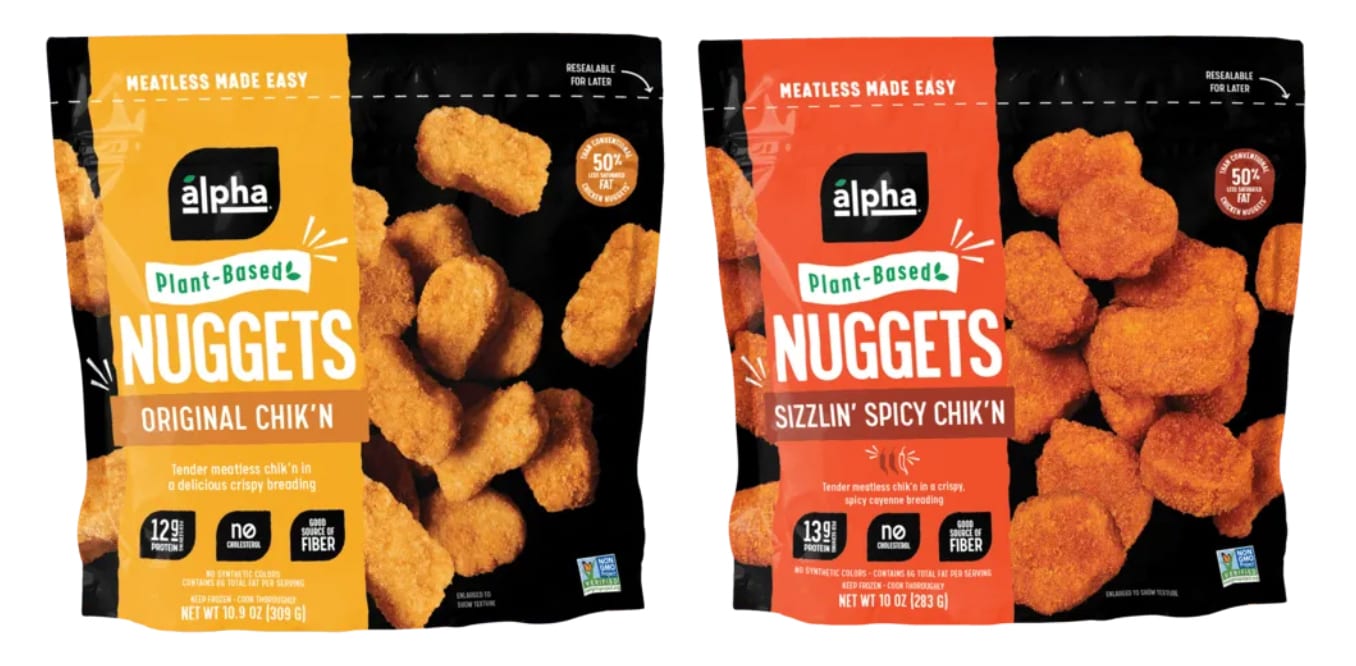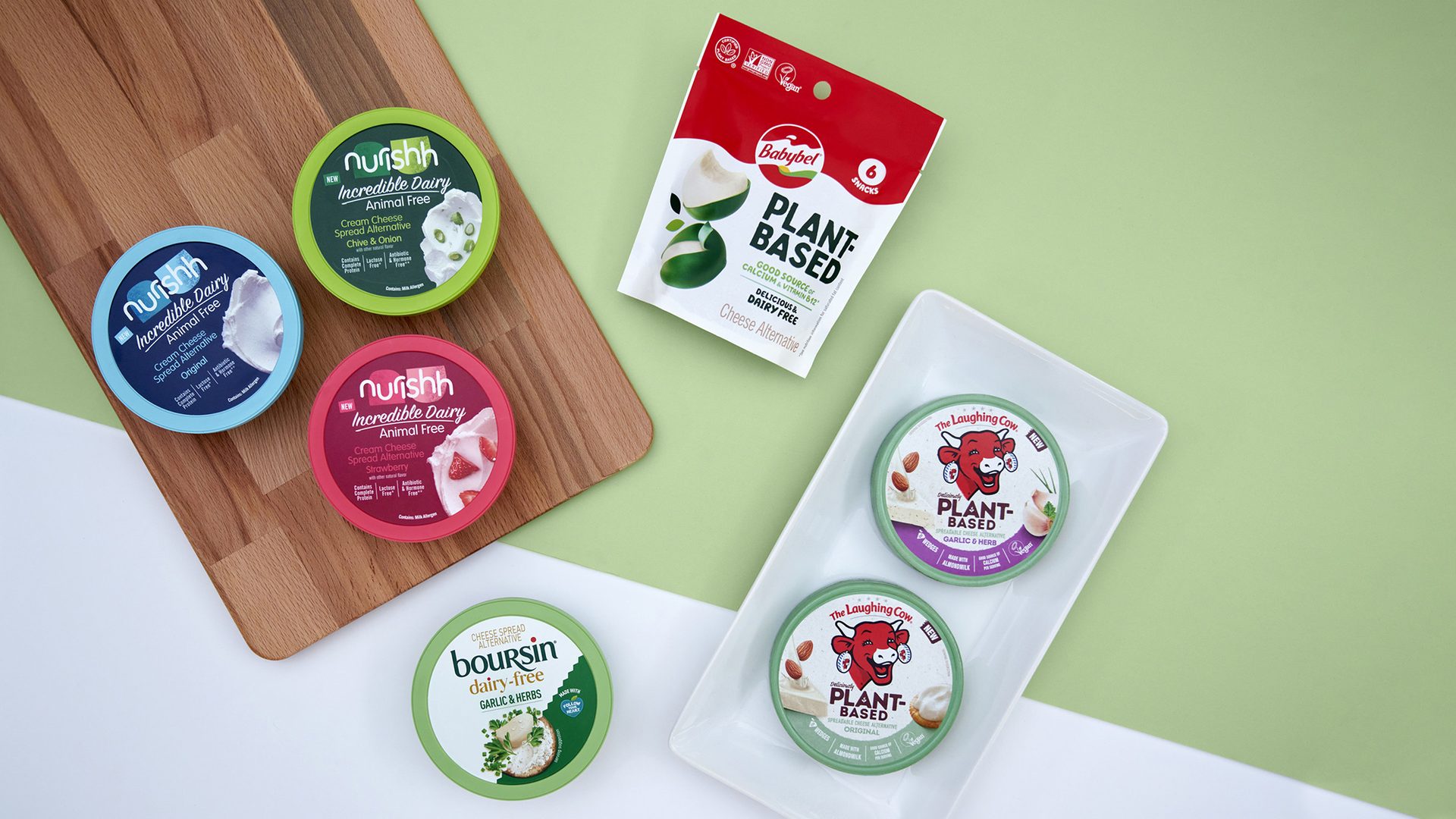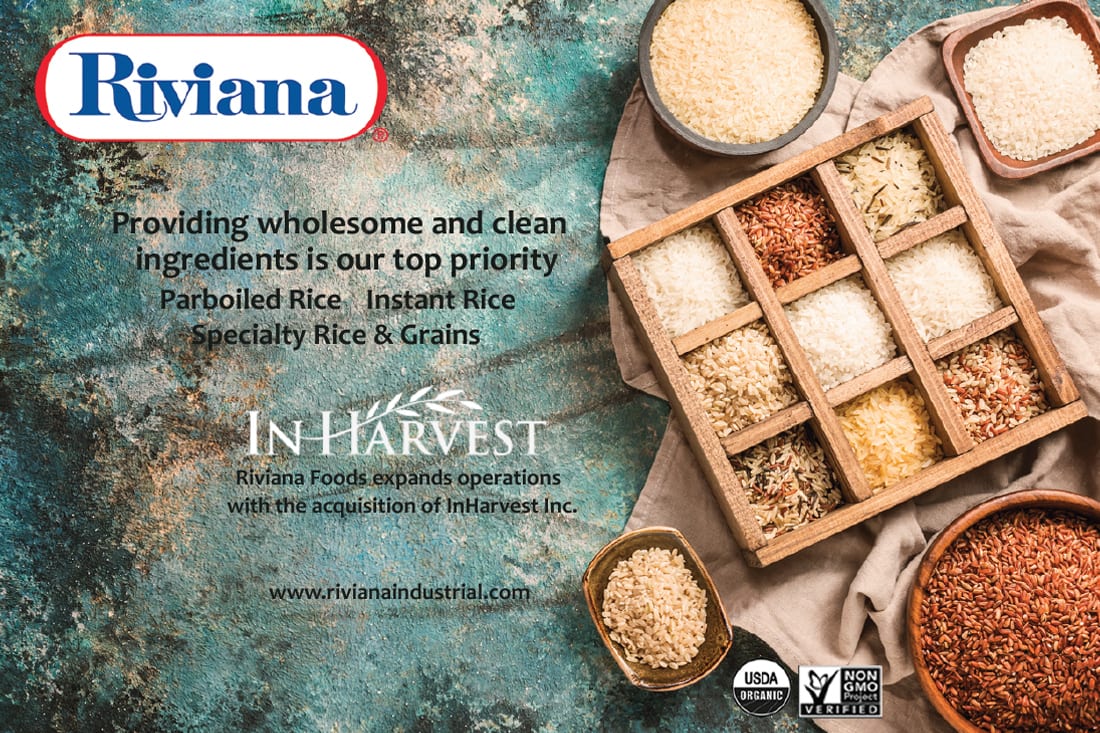Plant Based Foods, Part 2
Trends
By LU ANN WILLIAMS, Contributing Editor
Plant protein innovation expands options, opportunities.
Protein’s Progress
More Ingredient Options
Each type of plant protein contributes unique properties around taste, functionality, cost and nutrition profile. A look at product labels also shows that a high proportion of products with plant protein contain more than one protein ingredient in order to optimize sensory and performance characteristics.
Pea proteins tend to disperse quickly in water and undergo solubilization—functionality that is critical for the successful acceptance of nutritional beverages. Pea proteins also fortify oat and other low-protein beverage bases. Fava bean proteins are lighter in color and milder in flavor, which makes them ideal for dairy alternative applications. Chickpea proteins are excellent at emulsification, aid in the melting of vegan cheese, and provide creamy texture to vegan yogurts. Lentil proteins work well in savory applications from a taste perspective. Legume proteins show strong growth in meat substitution. Potato protein gains share in dairy-alternative cheeses and yogurts.
Photo courtesy of: Getty Images / ArtMarie

Alpha Foods collaborated with JUST Egg (The EVERY Co.) to apply high-moisture extrusion (HME) technology to Alpha products, including its plant-based Chik'n Strips. Officials said the technology produces an improved product with fewer ingredients and appealing nutrition with higher protein content, lower carbohydrates, and fewer calories. Photo courtesy of Alpha Foods / LIVEKINDLY Collective
In addition to these classic proteins, Innova is monitoring other emerging plant proteins. Rapeseed (canola) is another protein that boasts the same amino acid profile and protein digestibility-corrected amino acid score (PDCAAS) as soy, hemp protein, and the fava bean protein.
Plant protein variety in the US is primed to expand with the availability of protein sources from around the world. Cereals, including ancient grains such as amaranth and sorghum, are primary dietary protein sources in Africa, Asia, Europe and Central America. Other potential protein sources include sunflower and lupine.

Say Cheese! In addition to traditional offerings, Bel Brands USA has expanded its dairy alternatives to include both plant-based and “dairy animal free” versions. Its newer Nurishh Incredible Dairy products use dairy proteins created through precision fermentation. Photo courtesy of Bel Brands USA
After Meat, Dairy, What’s Next?
Plant-based protein ingredients were used in one in 10 food and beverage launches during 2022. This surpassed animal-sourced protein for the second year in a row. Overall, the top categories for plant proteins are bakery, ready meals, cereals, meat substitutes, and dairy alternatives.
When we think about plant protein, meat substitutes and dairy alternatives are the first categories that come to mind, with high annual numbers of launches and continued growth. Within these large categories, poultry substitutes, fish and seafood substitutes, and plant-based cheeses stand out as strong growth drivers.
Innova also sees expanded use of plant protein ingredients in sports nutrition products and food and beverage launches for babies and toddlers. These categories join poultry and fish/seafood substitutes as the fastest growing. Chocolates are another growth area to watch as manufacturers transition into indulgent and confectionery products made without animal dairy ingredients. New and unique applications offer additional growth opportunities. For example, there’s blurring of the lines between snacks and meals and it’s likely to boost desire for protein in snack foods such as crackers and cookies.
Improving Nutrition
Nutrition parity has not been a priority in products with plant-based ingredients. Popular dairy alternative milk bases such as oat, coconut, and cashew do not contain as much protein so products made with these bases fall short—unless formulators add another ingredient such as pea protein.
A review of cheese alternatives finds that they emphasize sensory innovations for mouthfeel and meltability in comparison to added nutrients such as protein and calcium. That said, “vitamin/mineral fortified” is the fastest-growing claim on dairy alternative launches. Protein and fiber claims also are growing.
A 2023 study by ProVeg Netherlands compared nutrition quality of meat substitutes to that of animal-based products. Of the meat alternatives examined, 85% met the researcher’s protein criterion for meat substitutes and 15% met criteria for iron and vitamin B12, two hallmark nutrients in animal meat.

In October, Meati said it received a U.S. patent for MushroomRoot™ (Neurospora crassa) food applications. In another move, it launched three new shelf-stable mushroom jerky snacks. Photo courtesy of Meati Foods
New Tech, New Frontiers
We see that consumers and industry are excited about new technologies that ramp up protein production, protect the environment, minimize animal suffering and boost the affordability of foods with protein.
In a recent Innova survey, one-third of consumers globally expressed willingness to accept foods produced by new “farming.” These are regarded as practices that are better for the planet, reduce health risks, improve nutrient density, and result in food and products perceived as more natural. On the other hand, lower percentages of consumers actually are aware of innovative farming procedures.
In the technology space, our database shows the highest launch activity in dairy protein ingredients created by precision fermentation. In precision fermentation, proprietary strains of bacteria or yeast are programmed to produce target ingredients—which involve various types of dairy protein.
Whey, the first commercialized precision-fermented dairy protein, recently has been joined by casein and precision fermentation milk that are genetically identical to their animal counterparts. These proteins—so called as “plant-based” but more accurately as “animal-free”—fully replicate the taste, texture and function of traditional protein. They have no color or odor and can be used in alternative dairy products such as cheese, milk and yogurt.
Prior to the growth of precision fermentation, plant-based cheese products relied on additives such as emulsifiers, starches, and gums to replicate texture and performance. Innova is monitoring use of artificial intelligence—in combination with precision fermentation—to identify dairy and other protein ingredients to replicate, facilitate mass production, and lower costs.
Other technologies are poised to change the plant protein ingredient marketplace. Cell cultivation has made advances in replicating whole cuts of beef and chicken. The FDA has approved two cell-cultivated chicken brands for US commercialization. At least one US start-up is pairing cell cultivation with 3D printing for fish fillet production. Another start-up splices pig DNA into the nucleus of a soybean to produce porcine protein from soybeans that are grown in fields, just like conventional soybeans.
The fungal mycoprotein ingredient is becoming more popular and more mushroom mycelium is being converted into meat-like jerky and bacon products. Last year saw a group of processors form the Fungi Protein Association. One industry leader, Meati Foods, Boulder, Colo., said in October that it received a patent on a composition of matter containing Neurospora crassa, commercially known as MushroomRoot.
When we think about plant protein, meat substitutes and dairy alternatives are the first categories that come to mind... Within these large categories, poultry substitutes, fish and seafood substitutes, and plant-based cheeses stand out as strong growth drivers.
Looking Ahead
We expect precision-fermented and cell-cultivated animal proteins to continue to invite innovation. Expansion is likely into plant-based versions of high-demand animal proteins such as collagen. We also expect more animal-free fats from substrates such as rice bran, algae and yeast, which could help manufacturers better replicate whole cuts of beef, pork and poultry.
Pressure will build on governments and industry to develop standards for manufacturing protocols, food safety practices, definition, and labeling laws pertaining to new proteins generated by precision fermentation and cell-cultivation.
Industry experts predict that supply of plant-based proteins will not keep up with demand. Focus may need to shift from recreation of the sensory and performance aspects of animal protein to increased production that protects the environment, considers animal welfare, and maintains affordability. This may open the door to additional sources of plant-based proteins. PF
Lu Ann Williams is global insights director at Innova Market Insights, provider of market research services including the Innova Database. With more than 25 years’ experience in the food industry, Lu Ann is a trend expert and frequent public speaker at events worldwide. She leads a team of analysts and works with global clients. Contact her at luann.williams@innovami.com



